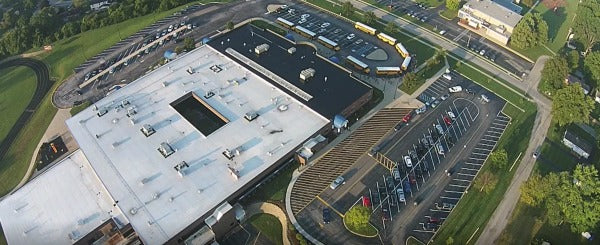
Looking through last Sunday’s ads, drones had a prominent spot for at least one store. Several versions were available from under $200 to $2,000 or more. Most included video cameras to provide great photos and/or videos. Since we currently use ground-mounted video cameras, getting a drone would seem like the next step.
If fact, a colleague recently sent us some sample videos of school operations taken from his drone. As you can see from the video, the whole pick-up/drop-off area is shown along with overall circulation around the site. This is a wonderful vantage point for traffic counts, obtaining dwell times, general observations of site circulation, determining queue lengths, and gathering a ton of other useful information to help us improve school operations.
Given the wealth of data available, are drones the next thing in traffic engineering data collection? While they could have a place at the table, I find it hard to believe they will become commonplace due to the regulations and restrictions. Per our quick review, here’s some of the hurdles involved:
- Pilot requirements. You need a remote pilot airman certificate with a small Unmanned Aircraft Systems rating (or be under the supervision of such a certificate holder). With our video camera systems, our quick YouTube video can get you ready to operate in 10-15 minutes with no other special training required.
- Unmanned Aircraft Systems requirements. The size of the drone makes a difference in the rules and generally, drones for this use would need to be under 55 pounds. The weight restriction has implications in terms of battery size and thus, the amount of time a drone could be in the air.
- Location Requirements. Without special approval, drones can be flown only with 5 miles from airports, give way to manned aircraft, and not fly over people or densely populated areas. Individual state rules will vary, but these restrictions can severely limit the range of sites from which you could capture data.
- Operating rules. These drones must fly during daylight hours and stay under 400 feet, which obviously limits overnight data and limits the size of the area to observe.
This is not the full list of rules and these rules may not apply to everyone (want to read more about the rules, here’s a nice site for your review). But beyond those rules, drones still require someone to operate for the entire time of any potential data collection. Thus, a simple two-hour collection requires payment for the drone and the pilot just to obtain the video. Processing of the video would still be necessary. The cost quickly goes if you want to complete origin-destination studies or other types of studies over longer periods of time.
I think drones and the videos they could collect will provide great benefits, but likely only for a small amount of special studies at this time. As always, that may change as technology and laws are updated and revised. But don’t buy one for the new year thinking it’s a quick and inexpensive new way for our traffic data collection needs.
